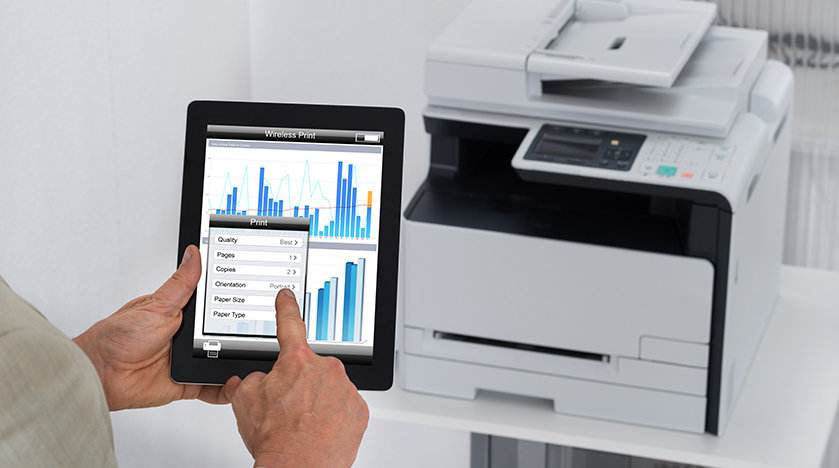Printer Buying Guide: How to choose a printer that best fits your needs - Connectivity
Article Index

Connectivity
Today, nearly every printing device offers multiple connectivity options. Basic Wi-Fi and cloud printing connectivity are now standard, but for particular projects, other types of connections may be more useful.
USB: USB connections are common on printers, with the USB-A standard being especially common. This allows you to hook up external hard drives and a variety of other devices, then use the printer’s menu screen to print files directly off of them. It’s useful if you don’t want to use your computer as a go-between. Cameras and other devices supporting the PictBridge standard can make this process even smoother, but it’s not as necessary as it was when introduced in 2003. Keep in mind that most home printers don’t support USB-C connections yet, although that’s changing.
Ethernet: Printers may also be equipped with Ethernet ports for wired connections to the internet. Printer data needs are fairly basic, however, and a wired Ethernet connection is rarely necessary for a home printer (it can be more useful in some office printer setups).
Wi-Fi: The majority of home printers are designed to connect directly to your Wi-Fi network. You will typically provide them with your Wi-Fi information during setup. Then you can download software on your computer, phone, or another device to send printing jobs directly to the printer, no cable necessary. It’s one of the most convenient options for home projects. Wi-Fi connections also allow for remote printing to an office, which can be very important in work-from-home situations.
Wi-Fi Direct: Wi-Fi Direct is a peer-to-peer connection not really related to your Wi-Fi network. Instead, it establishes a secure signal directly between a device and the printer. Apple’s AirPrint, for example, is a type of Wi-Fi Direct connection, and other platforms support similar technologies. It’s safe, quick, and great for on-the-spot printing needs.
NFC: NFC (Near-Field Communication) is also available on some models, letting you connect your printer to a smartphone or tablet by simply touching the device to a specified area on your printer.
Cloud printing: Many fully featured printers, particularly AIOs, now offer internet-based features that let you access photos stored on sites such as Facebook, Flickr, Dropbox, and Google Drive, as well as remote printing and access to arts and crafts you can print out. Keep in mind that if your printer isn’t connected to the internet, you won’t be able to access said services or print to it remotely from devices such as a smartphone or tablet.
SD cards: Some printers may also have slots for SD cards, which you can then navigate through using the printer’s menu and choose select files to print. This may be especially useful for photographers who can transfer SD cards directly from cameras to printers.







